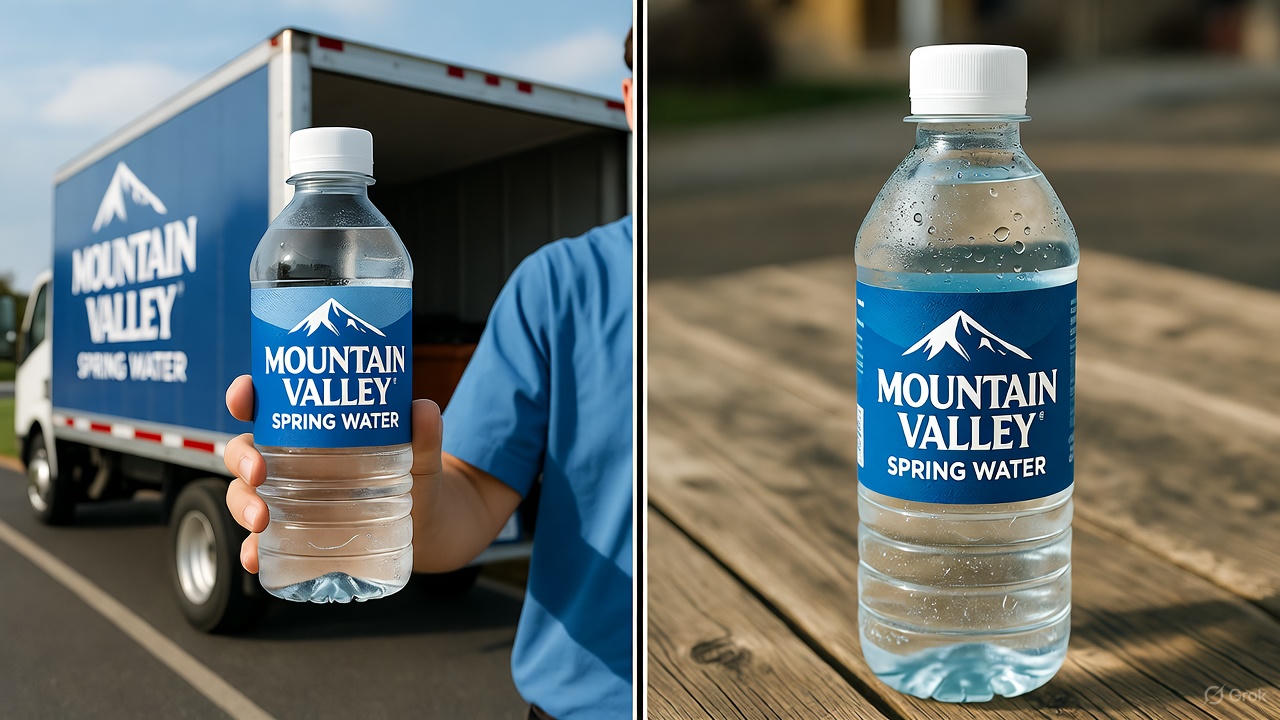Ever get tired of hauling heavy water bottles home, only to wonder if plastic’s messing with your drink? I know I have. That’s why Mountain Valley Spring Water delivery caught my eye—it’s like having a crisp mountain spring show up at your doorstep, no hassle required. Let’s walk through what makes this service special, how to set it up, and ways to dodge any headaches, all while keeping your hydration game strong.
Key Takeaways
- This water comes straight from Arkansas’ Ouachita Mountains, loaded with minerals like calcium and magnesium that your body loves.
- Delivery through partners like Primo means no-touch drop-offs and eco-friendly glass jugs, cutting down on plastic waste.
- You’ll spend about $15-$20 per 5-gallon jug, with monthly plans around $30-$60, depending on where you live.
- Folks are buzzing about premium water for wellness, but 2025 saw some supply snags, so plan ahead.
- Pair it with a dispenser for easy sipping, and always check your local distributor to avoid surprises.
What’s So Special About This Water?
Imagine sipping water that’s been filtering through mountain rocks for centuries. That’s Mountain Valley Spring Water, pulled from the Ouachita Mountains since 1871. It’s got a natural mix of minerals—67 parts per million of calcium, 7.3 of magnesium, and 1.4 of potassium—giving it a clean, smooth taste. Why does that matter? Well, about 40% of us don’t get enough of those minerals from food, says 2023 USDA data, so this water helps fill the gap.
Unlike those plastic bottles you grab at the store, this comes in glass to keep out tiny plastic bits that can sneak into your drink. Its pH hovers around 7.3 to 7.7, slightly alkaline, which some folks swear by for a softer feel on the stomach. It’s just pure spring water, no extra chemicals or processing, straight from nature to you.
Why Choose Home Water Delivery?
Let’s be real—lugging water jugs home is a workout nobody signed up for. Mountain Valley Spring Water delivery saves you the trip and brings health perks to boot. Those minerals I mentioned? They help your muscles work better and keep your bones strong, especially if you’re always on the go. The National Institutes of Health says our bodies are 50-70% water, needing 11.5 to 15.5 cups a day, and this tasty water makes hitting that goal a breeze.
Plus, it’s kinder to the planet. Those glass jugs get reused, slashing plastic waste by up to 90% compared to store-bought bottles. And for anyone juggling a packed schedule, having water delivered means one less errand to stress about. I’ve heard friends say they drink more just because it’s there, ready to pour.
How Does the Delivery Work?
Getting Mountain Valley Spring Water delivery set up is as easy as ordering pizza. You pick your water, set a schedule, and let the pros handle the rest. Here’s the breakdown.
Finding Your Local Distributor
Start by popping your ZIP code into the Mountain Valley or Primo website. With over 100 distributors across the U.S., you’ll likely find one nearby, whether you’re in bustling NYC or a quieter suburb. If you’re out in the countryside, check early—some spots have spottier coverage. It’s like finding the best local coffee shop; a quick search sets you up.
Setting Up Your Order
Once you’ve got your distributor, choose your vibe: still water, sparkling, or flavored essences in 2.5- or 5-gallon jugs. Sign up online for deliveries every week or two, and decide if you want a dispenser—think hot or cold water at the push of a button. Here’s a hack: go for a bottom-load dispenser so you’re not wrestling a 40-pound jug. Setup’s done in a few clicks, and your first delivery is on its way.
What to Expect on Delivery Day
Drivers drop off your jugs right at your door, often with no-contact options for peace of mind. In places like LA, you might even score same-day service for last-minute needs, like stocking up for a hike. But heads-up: some folks in 2025 ran into delays when demand spiked. To stay ahead, use the tracking app or text your distributor a day before to confirm.
Breaking Down the Costs
Let’s talk cash—how much does Mountain Valley Spring Water delivery set you back? Prices depend on where you are, but here’s the deal.
A 5-gallon jug typically runs $15 to $20—say, $19.95 in Oklahoma or $14.99 for smaller orders in Iowa. Add a delivery fee of $10 to $14 per trip, and if you rent a dispenser, monthly costs for three jugs land around $30 to $60. You might also pay a refundable $45 deposit for the glass jugs to encourage returns. Compared to grabbing premium water at the store ($25 for a case), this is a time-saver with similar pricing.
Want to save a bit? Look for bundle deals, like $1 off per jug when you rent a cooler. It’s pricier than a home filter system, which might cost $500 upfront, but delivery means no installation headaches or maintenance.
How It Stacks Up Against Other Options
Not sure if Mountain Valley Spring Water delivery is your best bet? Let’s compare it to what else is out there.
Compared to Reverse Osmosis Systems
Home reverse osmosis (RO) systems clean tap water to a T, but they strip out good stuff like minerals—about 90% of them. Mountain Valley keeps those natural minerals for better taste and health, plus it doesn’t waste water like RO, which can lose three gallons for every one filtered. RO’s cheaper over time at pennies per gallon, but if you want hassle-free minerals, delivery’s the way to go.
Compared to Other Bottled Waters
Unlike Fiji or Evian, which often come in plastic, Mountain Valley’s glass bottles dodge microplastic concerns. It’s won 19 Berkeley Springs awards for taste, beating out many competitors. Through Primo, it’s available in more places than smaller local brands. If you’re searching for “glass jug exchange near me,” this is a solid pick.
Compared to Tap Water Filters
Pitcher filters like Brita are budget-friendly but need constant refills and don’t add minerals. Mountain Valley’s consistent quality helps with things like the 97% potassium deficiency risk from plain tap, per USDA stats. Try this: use delivery for drinking and a filter for cooking to keep your wallet happy.
Tackling Delivery Hiccups
No service is perfect, and Mountain Valley Spring Water delivery has its quirks. Here’s how to handle the big ones.
Ever had a delivery no-show? In 2025, about 20% of users in places like California hit snags due to supply shortages after a merger. My tip: keep an extra jug on hand and check in with your distributor weekly to stay in the loop. If you’re dealing with heavy 5-gallon jugs, switch to 2.5-gallon ones or grab a cart to roll them—perfect for anyone who finds lifting tricky.
Some folks worry about water quality after a 2025 lawsuit mentioned tiny traces of arsenic (0.16 ppb) and uranium, though well below FDA limits. The brand pushes back, but no 2025 water report’s out yet. If you’re cautious, apps like Oasis give it a 55/100 score—decent but worth checking your batch if you’re extra careful.
What’s Hot in Water Trends
The bottled water scene is huge, hitting $292.70 billion in 2025 and growing fast, with a 7.13% jump expected through 2030. People are all about premium waters like this one, especially for its slightly alkaline vibe that’s trending for wellness. Glass jugs are also a hit for cutting down on plastic waste—folks love sharing their eco-switches online.
Looking ahead, expect smarter delivery apps or even dispensers that sync with your smart home. These could make Mountain Valley Spring Water delivery even slicker, fixing gaps like spotty tracking or scheduling.
FAQs
How does Mountain Valley delivery work?
Find a distributor by ZIP code on their site or Primo’s app. Pick 2.5- or 5-gallon jugs (still or sparkling), set a weekly or biweekly schedule, and enjoy no-touch drop-offs. Track via app, but confirm availability in rural spots to avoid delays. Most users find it super convenient with friendly service.
What are the benefits of its minerals?
Packed with calcium (67 ppm), magnesium (7.3 ppm), and potassium (1.4 ppm), it fights deficiencies—40% of us lack these, per USDA. These boost bones, muscles, and hydration naturally, unlike filtered water. It’s a tasty way to support health without supplements.
How much does it cost monthly?
Three 5-gallon jugs cost $45-$60, plus $10-$14 delivery fees and optional dispenser rental. Jugs are $15-$20 each, varying by area. Deposits ($45) are refundable. It’s comparable to store-bought premium water but saves time. Check local deals to save more.
Is it better than RO systems?
Delivery keeps natural minerals, RO strips out (90% gone) and avoids water waste. It’s hassle-free with no setup costs, unlike RO’s $500 upfront. RO’s cheaper long-term, but for mineral-rich water without fuss, delivery wins. Pick based on your health or budget needs.
What if delivery is delayed?
Reach out to your distributor to reschedule—apps often send alerts. Stock an extra jug for high-demand times, like 2025 shortages in some areas. Weekly check-ins prevent surprises. Most issues clear up fast with a quick call or text to your provider.
Where is the water sourced from?
It comes from Ouachita Mountains aquifers in Arkansas, naturally filtered since 1871. No additives, just a balanced pH (7.3-7.7) and award-winning taste (19 Berkeley Springs wins). Glass bottling keeps it pure for delivery.
Ready to make hydration easy?
Pop your ZIP code into the Mountain Valley or Primo site and try a small order. You might find yourself drinking more and loving the crisp, clean taste.

